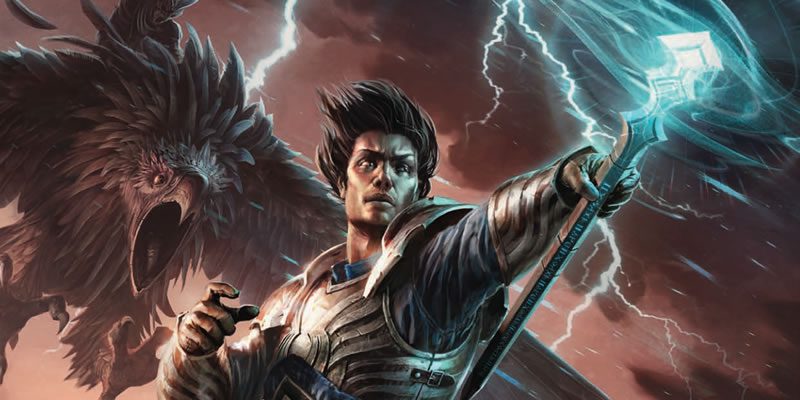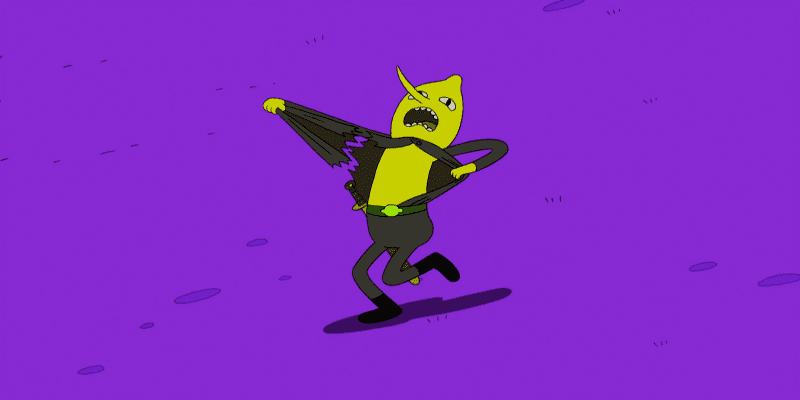Level-Banding in D&D 5e
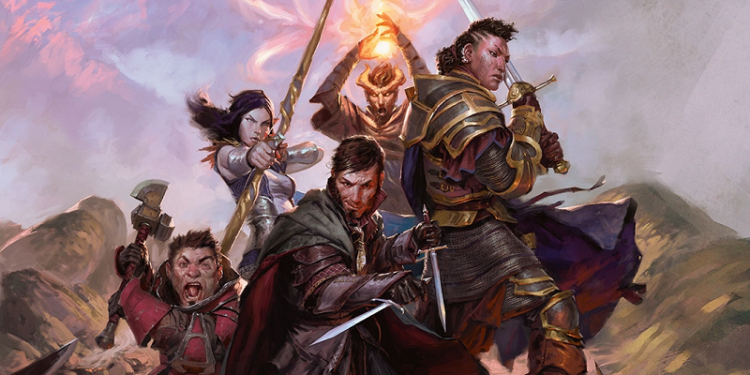
I have been playing 5th edition for a long time now. One of the games I currently play in has been running since the closed playtest, and has changed as the rules of the game has changed. While I certainly lament some of the previous iterations of the core design – RIP Specialties – I enjoy the edition, and have not yet experienced fatigue in playing or running the edition as of yet. One of the selling points of the edition is the inclusion of bounded accuracy. In theory, this approach means players and monsters scale less sharply on the to-hit/miss and DC side of things. A higher-level player can group with a lower-level player and find more or less the same content threatening.
Instead becoming so much chum for the player sharks after the first level or two, goblins pose a challenge for a longer period of time. This is a great idea… except for the fact that damage and health scaling does not feel the need to adhere to any preconceived notions of boundaries. If goblins can always hit you, players mark their advancement through other means. The amount of damage they can deal and absorb are easy metrics of player progress and encounter challenge. Conversely, it provides a line of demarcation that tells players that something is out of their league – maybe you shouldn’t expect to survive the treant hitting you for your entire health pool every time it connects. This is all well and good – seriously, I don’t have any problem with this approach. The problem is where the breakpoints exist for players. Playing a 2nd level character with a 4th-level character doesn’t feel bad, but playing a 4th-level character with a 6th-level character is pure cheeks. It’s not an issue of pure scaling, honest. Let’s first dive into the realm of metrics, to help get to the root of the issue.
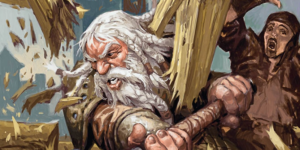
Metrics are a funny thing. Numbers tell you a lot about a lot of things, but only if you know what to do with the information once you have it. For example, it’s easy to compare a 5th-level physical-damage-dealing character with two attacks to a 5th-level spellcaster using the fire bolt cantrip. Two attacks with a longsword and the Dueling fighting style deal 2d8+2*stat modifier+4, while the cantrip deals 2d10. The physical attacks deal 8.5 damage on average – assuming a +4 modifier – for a total of 21, while the cantrip deals 13 damage on average. Both attacks resolve against AC, so this is a fairly good comparison. Assuming an AC of 18 for creatures – picked solely for the purposes of math – each character hits on an 11 or better, or 50% of the time. The physical character attacks twice per round, hitting 50 times in 50 rounds, while the magical character hits 25 times in 50 rounds, on average. Across that time, the physical character deals 525 damage, and the magical character deals 275 damage.
Now, if you assume the physical character is dual-wielding and has the Two-Weapon Fighting fighting style, the math changes significantly. The physical character – without any feats – now deals 3d6+3*stat modifier, or an average of 7.5 per hit, and 22.5 per round. Across 50 rounds, you hit 75 times, dealing an average of 562.5 damage. From a purely damage-based metric-driven perspective, does this mean dual-wielding characters are much better than a silly ol’ 5th-level caster when no resources are being burned, the creature’s AC is 18, and feats are not included, right? Absolutely. Does that really mean anything? Only within that specific metric statement, and not outside of it.
However, looking at all three of these averages, we have a useful comparison against the same characters at 4th level. 4th-level characters of the same archetypes deal 1d8+stat modifier, 1d10, and 2d6+2*stat modifier damage. In other words, 10.5, 5.5, and 7.5 average damage per hit, but 100% hit rate in a round changes to 10.5, 5.5, and 15. 50% hit rate (AC 17, in this case) across 50 rounds changes to 262.5, 137.5, and 375. In short, 50% less damage from the duelist and spellcaster, and 25% less for the dual-wielder. In other words, this is a big power spike level – even when you don’t take resource-spending features or feats into account. While feats might make the jump from 3rd to 4th big, there is no question that going from 4th to 5th is a universal power spike. Up until that point, damage is fairly flat. A 1st-level character deals the same damage as a 4th-level character – given the constraints of our model, at least. Since the basic damage and accuracy of these characters doesn’t increase across that three-level span, it makes sense that we look to other areas to see characters progress. One such area is health.
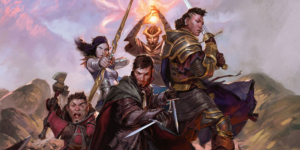
All characters – assuming they remain the same class – become roughly 18% healthier (averages on health rolls), and their sustain (hit-die healing) increases by roughly 2% on average – comparative average healing taken against total health pool – when they level from 4th to 5th. Even though a character’s base damage doesn’t increase when you compare a 1st and 4th-level character to a 5th-level character, the health differential is staggering. A 1st-level wizard might have 8 hit points at 1st-level, and 30 hit points at 5th-level. This is a 375% increase in health, and a roughly 25% increase in sustain. The difference between 1st and 4th is ~306% and ~23%, respectively. This seems more impressive than it really is, as these low numbers are subject to rapid exponential growth, slowing down as levels continue. It’s not really a gigantic deal that a 3rd-level character has 11 less hit points than a 5th-level one, or that the 5th-level character averages slightly more self-healing per day. The problem is that the 5th-level wizard is that much more durable and does that much more damage than even the 4th-level wizard, let alone the 3rd-level wizard.
The next question is the most important: does it matter than 5th-level characters are so much more powerful than even 4th-level characters? Well, that depends entirely on the aims and rules of a specific game, but it does run at least perpendicular to the idea of bounded accuracy as a method for handling disparate level ranges. One answer to this sort of challenge exists in encounter design. In fact, the experience budget specifically accounts for players being different levels and provides copious guidelines on how to spend said budget. This will certainly provide a variety of monster CRs for the party to face… but the fact of the matter is, the lower players are still at a tremendous disadvantage. This is largely due to the way the creatures themselves scale, particularly at the low end of the spectrum.
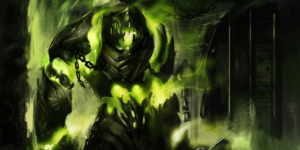
While there are guidelines for creating monsters, the published works – such as the Monster Manual and Volo’s Guide to Monster – often do not follow these established rules. What results is creatures that are vastly underpowered or significantly stronger than their CR would otherwise indicate. It would stand to reason that weaker creatures would actually be a boon to these lower level characters, but the opposite is true in the case of physical damage dealers. The clearing power of physical damage dealers increases significantly due to additional attacks and the ability of characters to move in between them. While it would certainly be beneficial for a 5th-level fighter to hop on the biggest creature in an encounter for characters spanning 1st to 5th-levels, it is actually more beneficial for them to clear the weaker creatures as fast as possible. They clear the creatures exponentially faster than their junior counterparts, as their damage has increased, as has their ability to target multiple creatures. On the reverse side, if the creature is actually beefier than its CR suggests, these lower level characters are going to have difficulty tackling it, while the higher-level characters easily clear the threat and move on. This all makes logical sense, but it makes more difficult encounter building, regardless of the preparation and thought that goes into it.
Two great examples are goblins and animated armors. Goblins are CR ¼ and sport AC 15 and have 7 hit points. In most cases, a character hitting a goblin with a weapon attack kills it. At AC 15, a 1st-4th level character hits on a 9 or better, while a 5th-level character hits on an 8 or better. While these odds are better than 50/50, it still greatly favors the physical character with at least two attacks going after it. Should she hit, it’s almost a guaranteed kill, and if she misses the first time, it’s probably a kill the second attempt. For spellcasters, the added damage is huge. It’s only a 40% chance to kill it with the damage from your sub-5th fire bolt, while you’re looking at an 85% chance to kill it with the damage from your 5th-level fire bolt. Due to the way bounded accuracy works, clearing the lower creatures is a significantly more meaningful action than in previous editions.
The animated armor is the other extreme. It’s CR 1, but with 33 hp and an AC of 18. Its damage output is also slightly on the high side of normal. Also, it has a plethora of condition immunities and some damage immunities. At such a high AC, the extra 5% hit chance of 5th-level characters is extremely meaningful, not to mention the opportunity to attack it multiple times in a round. All things being equal, the 4th-level duelist fighter hits 40% of the time, taking 10 rounds on average for it to kill the animated armor, while the 5th-level duelist fighter kills it in 4-5 rounds. Again, this makes sense, but you can see the fraying occurring around these level-banding seams.
That doesn’t mean all encounters will or should go this way. This is just a basic presentation of why the idea of a bunch of little things and a few big things isn’t as easy of a fix as it might seem. The high-level characters are probably helping their party out by killing as much of the small things as possible, while the low-level guys whack at larger things with the help of another high-level character. The damage output of the opposition is just lower, and it frees up other characters more easily. It just… really hampers the usefulness and interaction of these lower-level characters. These 5th-level characters are just outright gaudy when compared to their 3rd- or 4th-level friends. Even the classes that don’t get quite as much damage oomph – see: rogue – get other flashy things that help out the other end of the spectrum – see: Uncanny Dodge.
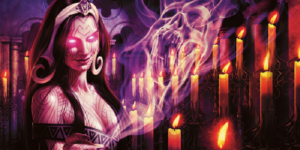
This isn’t just a problem at the low-end of the game, mind you. The difference between 10th and 11th level is nearly as stark, and the jump from 16th to 17th is also a big deal. The difference is characters have already passed one breakpoint, so it’s not quite as apparent that some characters have reached the next one while others have yet to do so. There is still a meaningful power spike, it’s just less exponentially apparent.
Of course, this is all looking at characters at their most stripped down. Needless to say, as characters progress they gain more options and resources, rather than fewer. That is to say, the situation is actually worse than I am making out. I’ve stripped it down for ease of consumption. It matters more at the low end of the spectrum than the high end, which isn’t the best way for it to exist. If this difference had to exist, I would rather the power gaps be at the higher end of the level range, instead of the lower. Most games do not reach the highest levels the game has to offer, so the disparities would be encountered less often. This would lead to mixed-level games without the need to worry about these hard breakpoints quite so much. I also understand that I am purely discussing combat here, while ignoring the other pillars of the game. The reason I am doing so is that I believe it is easier to involve mixed-level players in this other content, and I am giving the DMs the benefit of the doubt that they are incredibly capable of doing so.
Still, this isn’t an insurmountable problem. Most of this can be solved by simply being aware of the problems that exist. While these breakpoint disparities are prevalent in the party, fights that aren’t pure combat encounters should be considered. This could be puzzles that are part of the fight, terrain that needs to be dealt with, or even non-hostile creatures that need to be assisted in some way. The characters need the opportunity to shine in a way that isn’t strictly combat. Let’s face it, as long as some of the characters are past these major breakpoints, the rest of the party isn’t going to be as bright from a strictly combat perspective. Alternative spotlights need to be presented whenever possible. If that isn’t possible every single fight, don’t worry about it. Letting the higher-level characters be bladed tornados (bladenados) and mow through things from time to time is totally fine. They earned those higher levels, they should feel like badasses. It just needs to be varied up with other opportunities to let the fledglings earn their wings, as well.

